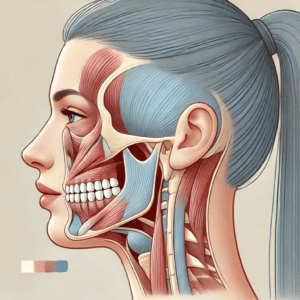How to Choose the Best Shoes for Diabetic Neuropathy with Wide Feet? 👟
Table of Contents

Introduction
Are you struggling with diabetic neuropathy and wide feet, searching for the perfect footwear? Do you find your feet constantly aching, feeling numb, or tingling? 😫 It’s a frustrating reality for many, but you’re not alone. Finding the best shoes for diabetic neuropathy with wide feet is crucial for managing your condition, maintaining your mobility, and, most importantly, improving your quality of life.
The right shoes can significantly reduce discomfort, prevent foot ulcers, and promote better circulation. Unfortunately, the wrong pair can worsen symptoms and lead to serious complications. It’s a delicate balance, but with the right knowledge, you can make informed decisions and find shoes that offer both comfort and protection.
This guide is here to help you navigate the complexities of choosing the right shoes. We’ll explore the essential features to look for, the different types of shoes available, and how to ensure the perfect fit. Think of this as your personal guide to finding comfortable, supportive footwear that keeps you moving. Let’s dive in and find those perfect shoes! 🥾
What is Diabetic Neuropathy and Why Is Footwear Important? 🤔
Diabetic neuropathy is a type of nerve damage caused by high blood sugar levels. It often affects the feet, leading to numbness, tingling, pain, and sometimes, loss of sensation. This loss of sensation is particularly dangerous because you might not feel cuts, blisters, or pressure points, which can quickly develop into ulcers or infections.
Why is footwear so critical? 🤔
- Protection: Properly fitted shoes protect your feet from injury. They act as a barrier against potential hazards, like stepping on sharp objects.
- Support: Shoes provide support for your arches and help distribute your weight evenly, reducing pressure on sensitive areas.
- Prevention: Well-designed shoes can prevent the development of ulcers and other foot problems by minimizing pressure points and friction.
- Circulation: Certain shoe designs can promote better blood flow to the feet, which is essential for healing and overall foot health.
The right footwear goes beyond just comfort; it’s a vital part of your health management strategy.
What Features Should You Look for in Shoes for Diabetic Neuropathy? ✅
When choosing shoes, there are several key features to consider:
- Wide Toe Box: Ensure the toe box is wide and deep enough to accommodate your toes without any pressure. This is particularly important if you have wide feet or any deformities, such as bunions or hammertoes. 👣
- Seamless Interior: Look for shoes with a seamless interior to avoid friction and irritation. Even small seams can cause blisters or ulcers if you have reduced sensation.
- Adjustability: Shoes with adjustable closures like Velcro straps or laces allow for a customizable fit, essential for accommodating swelling or changes in foot size throughout the day.
- Good Arch Support: Proper arch support helps distribute your weight evenly, reducing pressure on the balls of your feet and heels. Consider shoes with built-in arch support or removable insoles to accommodate custom orthotics if needed.
- Cushioning: Ample cushioning in the midsole and insole can absorb shock and provide comfort. Look for materials like gel, memory foam, or specialized diabetic insoles.
- Breathable Materials: Choose shoes made from breathable materials like leather or mesh to help prevent excessive sweating, which can lead to skin irritation and infections.
- Firm Heel Counter: A firm heel counter provides stability and helps control foot motion, reducing the risk of ankle sprains or other injuries.
- Non-Slip Sole: A non-slip sole offers better traction and can help prevent falls. This is especially important if you have balance issues due to neuropathy.
- Rockered Soles: These soles have a curved design that helps to roll your foot forward with each step, which can reduce pressure on the forefoot and toes.
These features work together to provide the best possible protection and comfort for your feet.
Different Types of Shoes for Diabetic Neuropathy 👞
There are several types of shoes designed specifically for individuals with diabetic neuropathy and wide feet:
- Diabetic Shoes (Therapeutic Shoes): These are shoes specifically designed to accommodate the unique needs of people with diabetes. They often have a wide toe box, seamless interior, supportive features, and adjustable closures.
- Athletic Shoes: Many athletic shoes offer excellent cushioning, support, and breathability. Look for those with a wide toe box and removable insoles to accommodate custom orthotics. Brands like New Balance and Brooks offer great options. 🏃
- Walking Shoes: Walking shoes are designed for comfort and moderate activity. They typically have good cushioning, arch support, and a secure fit.
- Slip-On Shoes: If you have trouble bending or tying laces, slip-on shoes with adjustable closures or elastic panels can be a practical choice.
- Sandals and Open-Toe Shoes: Some sandals are designed with the same features as supportive shoes. Look for those with adjustable straps and good arch support. However, always be cautious about foot protection.
- Boots: For added ankle support and protection, consider boots with a wide toe box and adjustable features.
Each type has its advantages, so consider your lifestyle, activity level, and personal preferences when choosing the best option for you.
Conclusion
Finding the best shoes for diabetic neuropathy with wide feet requires careful consideration of your specific needs, a willingness to experiment, and a commitment to ongoing foot care. Remember to prioritize features like a wide toe box, seamless interiors, adjustability, and ample cushioning.
Regularly measure your feet, consider professional fittings, and don’t hesitate to try different brands and styles. By following these guidelines, you can significantly reduce the risks associated with diabetic neuropathy and improve your overall quality of life. Your feet will thank you! ✨














Post Comment